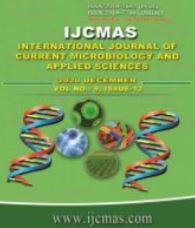


 National Academy of Agricultural Sciences (NAAS)
National Academy of Agricultural Sciences (NAAS)

|
PRINT ISSN : 2319-7692
Online ISSN : 2319-7706 Issues : 12 per year Publisher : Excellent Publishers Email : editorijcmas@gmail.com / submit@ijcmas.com Editor-in-chief: Dr.M.Prakash Index Copernicus ICV 2018: 95.39 NAAS RATING 2020: 5.38 |
The documentation of traditional Bandha weavers was done in Cuttack district of Odisha where three selected villages were surveyed through purposive and simple random sampling techniques having 153 respondents. Majority (80.39 %) of respondents were above 35 years age, 83% had nuclear family system, 50.33% had education up to primary level, 54.91% belonged to OBC, 42.48% minority OBC (Buddhist), 79.74% had ration card holders, 98.69% male members engaged in Bandha work, 42.48% had major occupation of Bandha making and weaving, 30.72% only Bandha making, 59.48% had rich experience in Bandha work more than 20 years and their major source of learning was from their ancestors,77.78% worked 4-8 hours/day, mostly in their inherited house, 48.37% members of weavers cooperative society, 24.18% members of SHGs and weavers cooperative society and mostly not using advanced tools and equipments. Majority (50.33%) of respondents were generating meagre income of within Rs.5000/- per month by engaged in various ways on Bandha work and have not much of subsidiary income as 64.05% were landless, indicating majority of the respondents were very poor socio-economic status. So some recommendations were forwarded to Govt. to sustain their livelihood as well as the Bandhaart of Odisha.
 |
 |
 |
 |
 |